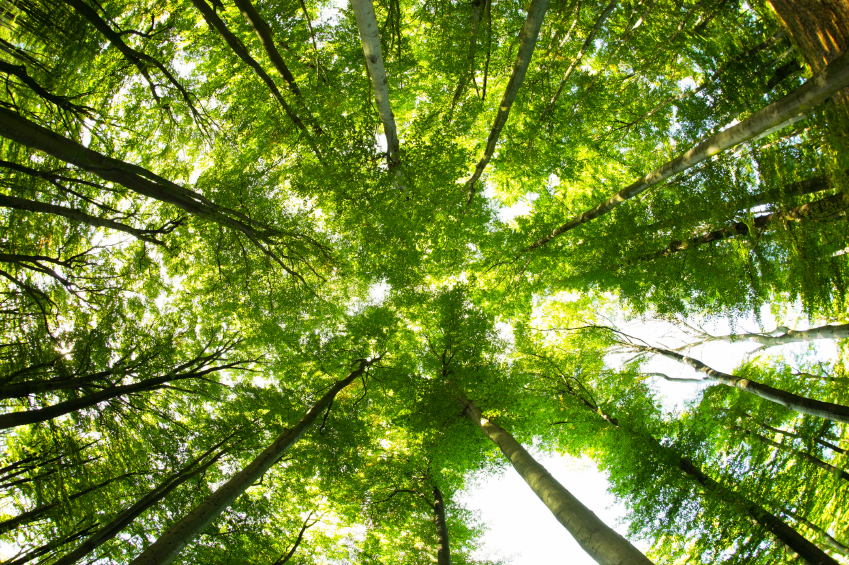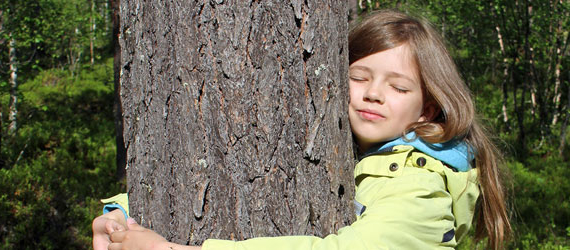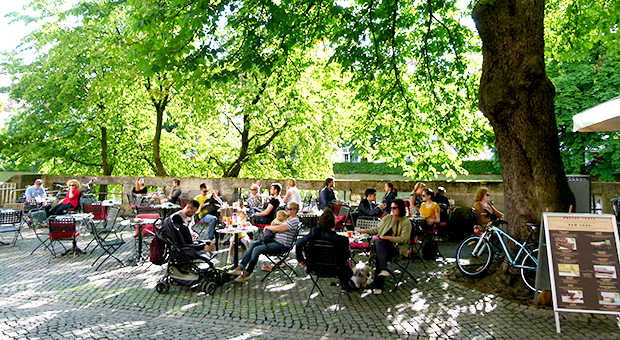Indeed, what is more beautiful and peaceful than sunny mornings in the countryside? Yet, 55% of the world’s population nowadays inhabits cities, with 15% more expected to move from rural to urban areas by 2050. As such, the increasing populations of cities are in need for more green elements to break the dullness of concrete, brick, steel, and asphalt.
Ideally, cities should comprise three types of infrastructures: (1) Grey, representing buildings, roads, and parking areas; (2) Blue, representing rivers, ponds, and water channels; (3) Green, representing grass, trees, and shrubs in streets, gardens, and parks. According to urban designers and landscape architects, the interaction between the three is essential to face different urban challenges.
Benefits of Urban Trees
Since the financial value of investing an area in grey infrastructure makes easy money, many cities—especially in developing countries—ignore the much higher value of green infrastructure. In fact, urban trees have much to offer to the environment, climate, biodiversity, human health, economy, and quality of life as a whole. They also play a crucial role towards achieving the UN Goal 11 of sustainable development: “Sustainable Cities and Communities”.
Environmental Benefits
Trees have numerous environmental benefits, providing what is known as ecosystem services. Most importantly, they absorb CO2—the notorious greenhouse gas—and produce oxygen, directly contributing to combating climate change. Trees also cast shade and release water vapor, contributing to reducing temperatures. As such, they mitigate what is known as the Urban Heat Island (UHI) effect, which causes changes in weather patterns.
Trees also help cities be more resilient to the devastating effects of climate-change-driven catastrophes. They slow down the movement of storm water, contributing to lowering the total runoff volume, soil erosion, and flooding. Leaves, branches, and trunks intercept rainwater, some of which evaporate back into the atmosphere and some soak into the surrounding ground. This also prevents storm water from carrying pollutants to the ocean and other water bodies.

Besides addressing climate change, trees help flourish urban biodiversity. Not only does planting diverse types of trees and shrubs promote biodiversity, the trees themselves also provide shelter, food, and protection to numerous species including birds, bees, and squirrels. Moreover, trees save freshwater, the world’s most precious commodity nowadays; they increase groundwater recharge, which the paved areas in cities significantly reduce. Moreover, trees’ shade slows down water evaporation from grass in parks; and as trees transpire, they increase atmospheric moisture.
Cities are generally associated with higher pollution levels, marking some of the most polluted areas around the world; trees fight different types of pollutions. First, they improve the quality of air by trapping urban pollutants and fine particulate matter generated from burning biomass and fossil fuels. The particulates are trapped and filtered by the leaves, stems, and twigs, and washed to the ground by rainfall. Second, trees contribute to purifying rain and underground water, allowing lesser amounts of chemicals into freshwater bodies. Third, they mitigate the noise of cities through absorbing sound waves, creating a more peaceful setting.
Health Benefits
Trees play a significant role in environmental health; a branch of public health concerned with the effect of the surrounding environment on human health. They improve physical and mental health, and promote wellbeing and relaxation.
Studies have shown that people tend to go outdoors and exercise when their surroundings are greener. As such, urban trees encourage physical activity and reduce the levels of obesity and obesity-related diseases in cities. Urban parks provide opportunity for physical fitness, and have become increasingly popular as places to walk, run, bike, and hike.
Additionally, children who are more exposed to natural settings develop better concentration skills, and are less likely to develop Attention-Deficit/Hyperactivity Disorder. Trees also relieve what is known as Nature-Deficit Disorder; a condition resulting from spending excessive time indoors, particularly with no view of the outdoors through windows.
 The above-mentioned ecological services trees offer cities also reflect positively on the health of their inhabitants. Without trees, harmful particulates and gaseous emissions would find their way into people’s lungs, exposing them to asthma conditions, as well as several respiratory and even cancerous diseases. Moreover, the strategic placement of trees in cities can cool their temperatures by 2˚C–8˚C, which can help mitigate the strikes of heat waves, which kill tens of thousands of people around the world annually.
The above-mentioned ecological services trees offer cities also reflect positively on the health of their inhabitants. Without trees, harmful particulates and gaseous emissions would find their way into people’s lungs, exposing them to asthma conditions, as well as several respiratory and even cancerous diseases. Moreover, the strategic placement of trees in cities can cool their temperatures by 2˚C–8˚C, which can help mitigate the strikes of heat waves, which kill tens of thousands of people around the world annually.
Not only do trees prevent health risks, but they also speed up recovery phases and increase the average lifespan. For example, it has been found that patients whose rooms have a view of trees have shorter post-operative stays in hospitals. Also, a study conducted by Harvard researchers found that females surrounded by the least vegetation had a 12% higher non-accidental death rate.
Economic Benefits
Although they usually go unnoticed by many people compared to other benefits, urban trees do have significant economic benefits. First of all, they provide hundreds of job opportunities, for trees require trained personnel for planting, watering, pruning, pest management, and so on. Second, urban trees can provide wood to be used in heating or cooking; they can also provide food products, including nuts and fruits, or beautiful flowers. Third, trees save energy; according to FAO, trees that are properly placed around buildings can reduce air conditioning needs by 30% and save energy used for heating by 20%–50%.
Now, let us do some money talk! It has been found that trees can increase real estate properties value by 20%; neighborhood greenspaces typically increase the value of properties located nearby. Apartments, offices, and hotels surrounded by trees are sold/rented more quickly, have higher occupancy rates, and tenants stay for longer periods. Furthermore, customers tend to shop more when the stores are located in areas with large numbers of shade trees.
Last but not least, trees also have their toll on businesses and human resources. Research has shown that employees without a view of nature from their desks reported 23% more instances of illnesses than those with a view of greenery. Moreover, the latter are more productive and have reduced absenteeism level.
Social Benefits
Trees can form friendships and stop crime! Studies have established a direct link between the amount of trees and grass in a specific community common spaces and the social interaction between its dwellers. As per a study conducted in 1996 at the University of Illinois, parks and trees offer a place for neighbors to meet and get to know each other. These friendships later develop into networks of support, and eliminate the level of fear in a given neighborhood. Similarly, other studies concluded that urban resident areas with more trees witness less violence and crime occurrences than their barren counterparts.

Specific kind of trees can serve as cultural and historical landmarks of a given area, contributing to shaping its identity, and serving as a source pride to its residents. In 2017, the enlightened citizens of the Egyptian Ismailia Governorate defended a historical rare banyan fig tree when a construction company opted to remove it to complete one of its projects. In response, the Government took action to protect the tree that dates back to the Khedive Ismail era, specifically during the digging of the Suez Canal. The same tree hosted the speech of French leader Charles de Gaulle, when he visited the city in 1940, and President Sadat gave instructions to preserve the tree during the reconstruction process of the city following the 1973 War.
Now that you know all that, my advice is to take immediate action. Cooperate with your neighbors or colleagues and plant a tree. You might need the help of some experts to choose the correct location taking into consideration existing underground infrastructure utilities, as well as the best types to be planted in a specific location.
Urban trees are much more than elements of landscape beautification or a luxurious setting for elite housing projects. They can achieve a lot of progress towards sustainably. They can save lives and can literally save our planet.
References